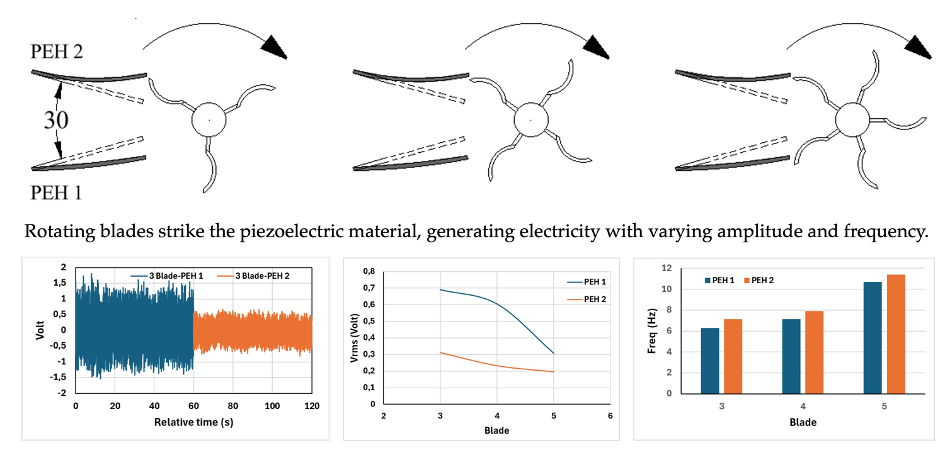Effect of windmill blade variations on the performance of piezoelectric energy harvesters: Enhancing vibration stability and power generation
Main Article Content
Abstract
Piezoelectric energy harvesters (PEHs) are gaining attention for their ability to generate electrical energy from environmental vibrations, with applications in various industries. This study focuses on optimizing the performance of a PEH using a cantilever system driven by wind energy through the impact of windmill blades. The objective is to evaluate how the number of windmill blades affects the PEH's voltage output and vibration stability. Experiments were conducted in a wind tunnel with a 250 mm × 250 mm cross-section equipped with a 12-inch blower to generate airflow. Three windmill configurations—3 blades, 4 blades, and 5 blades—were analyzed for output voltage and deflection of two PVDF-based PEHs placed at a 30° angle. Results indicate that the 3-blade configuration produced the highest voltage (1.79V), 4% and 43% higher than the 4-blade (1.71V) and 5-blade (1.01V) configurations, respectively. This configuration also exhibited maximum deflection and lower frequency vibrations. Increasing blade count led to higher frequency vibrations but reduced deflection and voltage output. The study highlights that fewer blades result in greater deflection and better energy harvesting performance. These findings contribute to ongoing research in PEH systems, offering insights into optimizing energy harvesting from fluctuating wind conditions by balancing deflection amplitude and vibration frequency.
Downloads
Article Details

This work is licensed under a Creative Commons Attribution-NonCommercial 4.0 International License.

